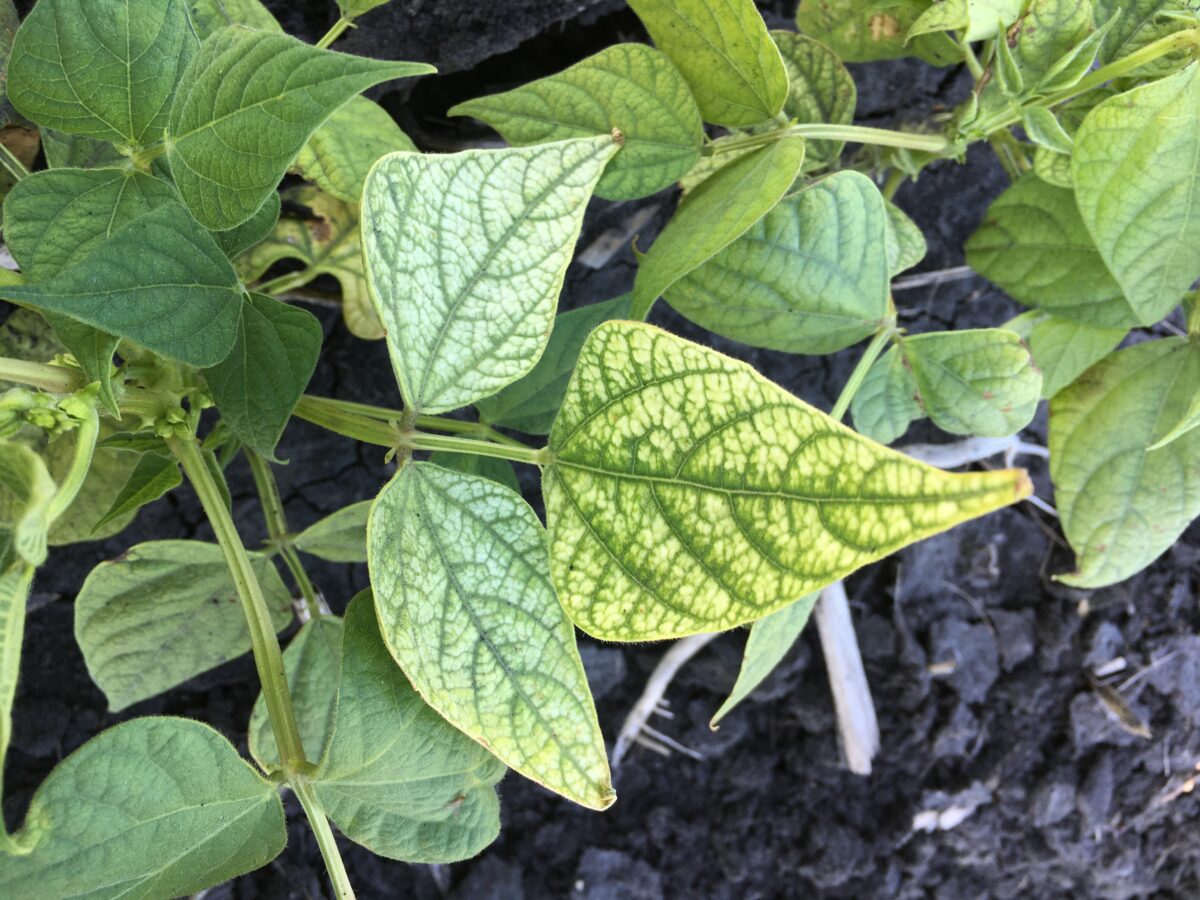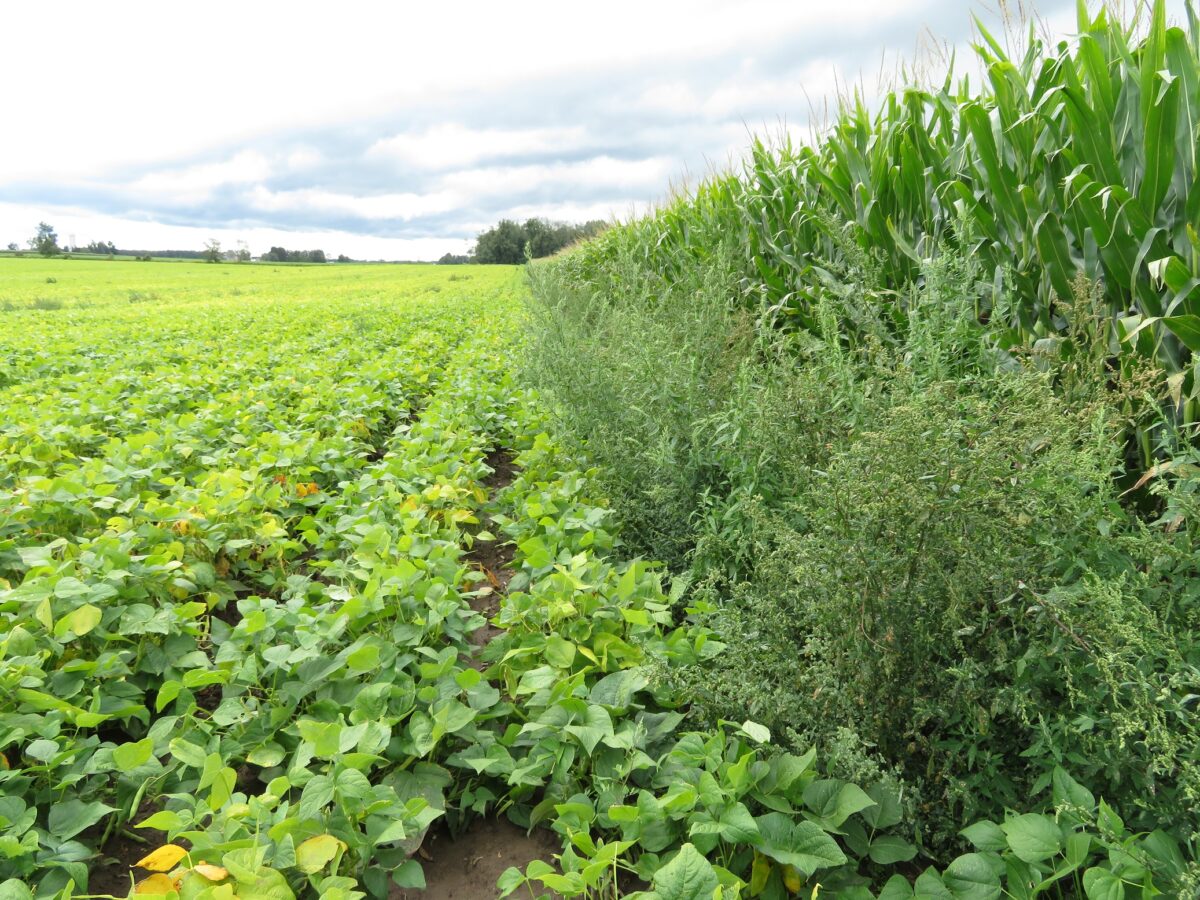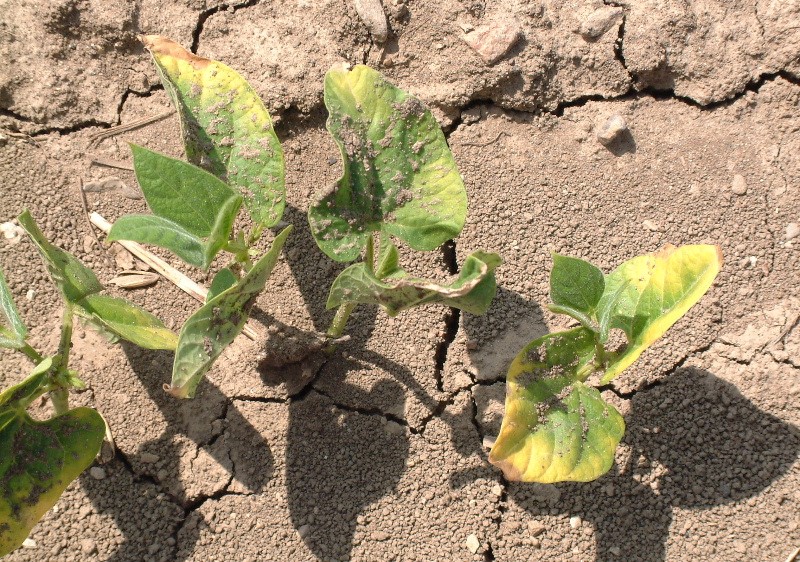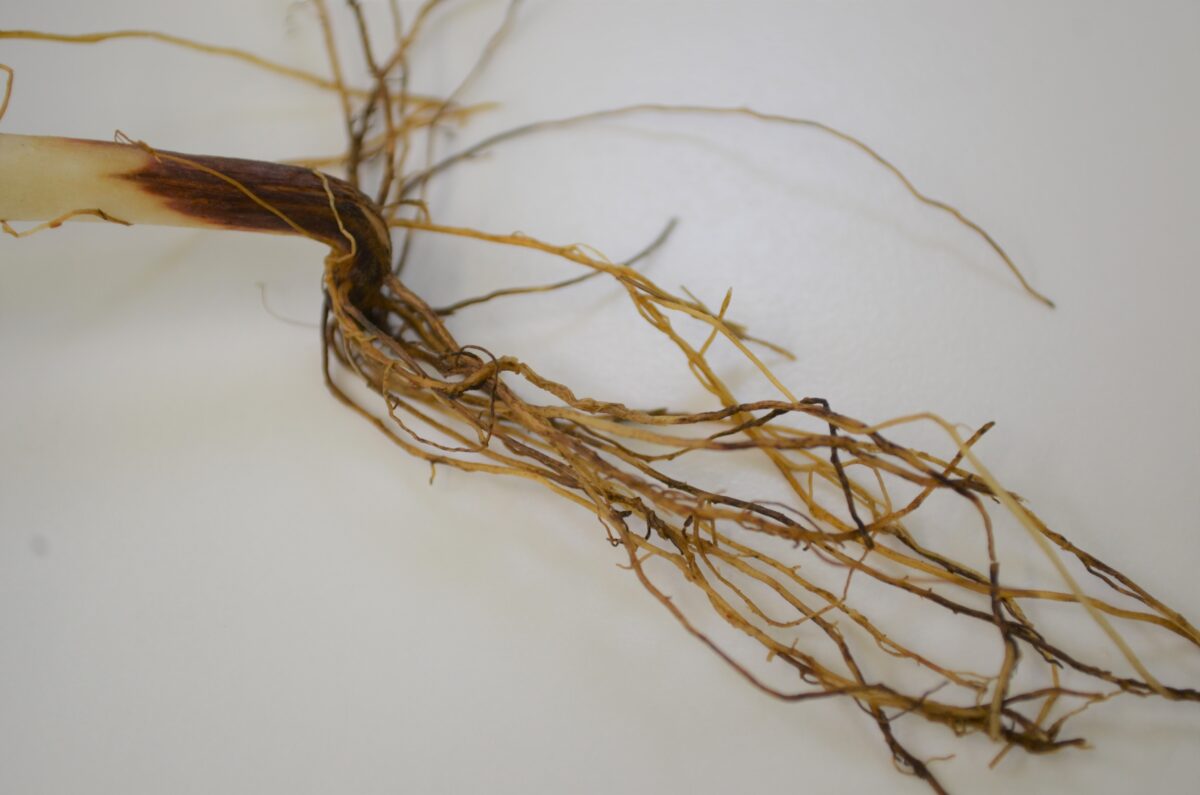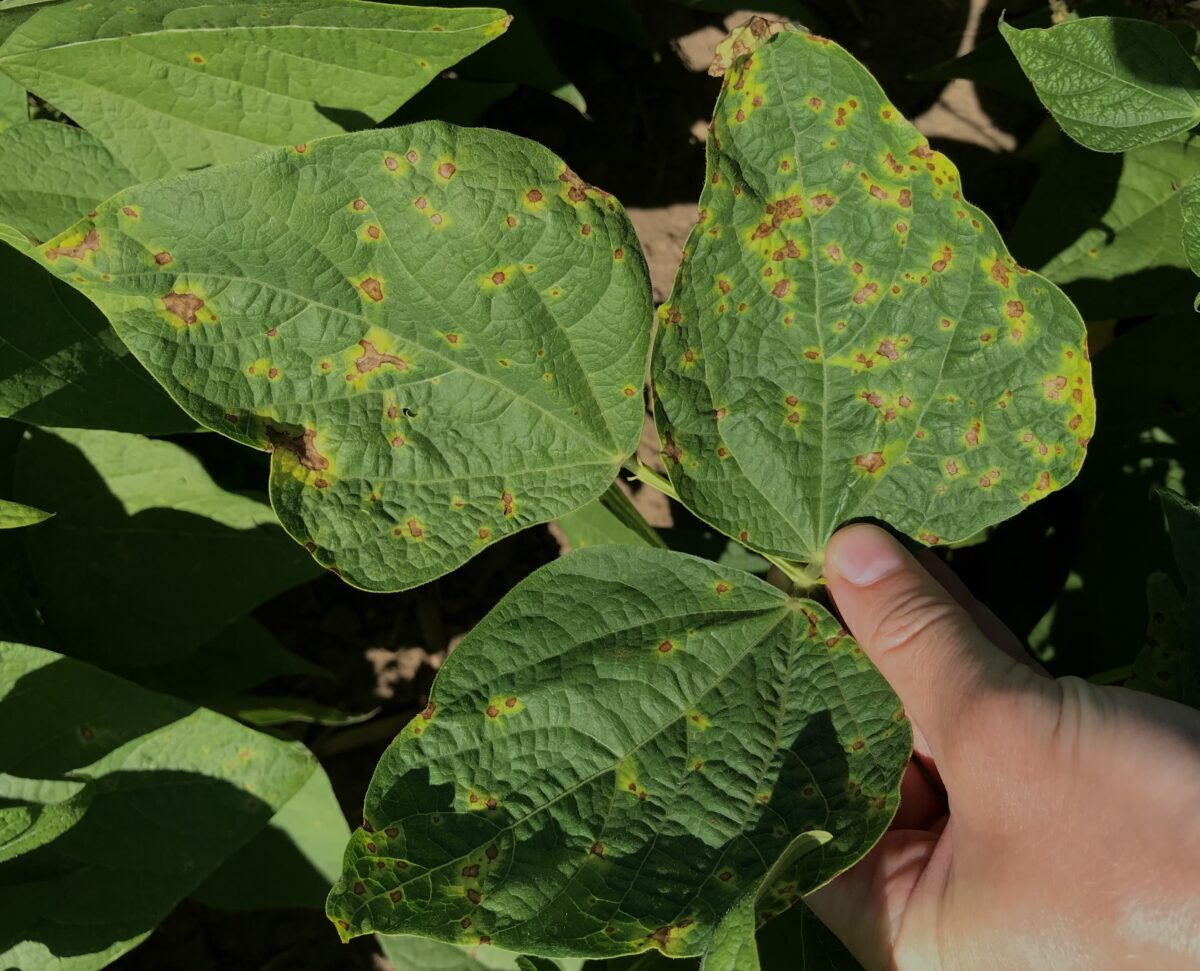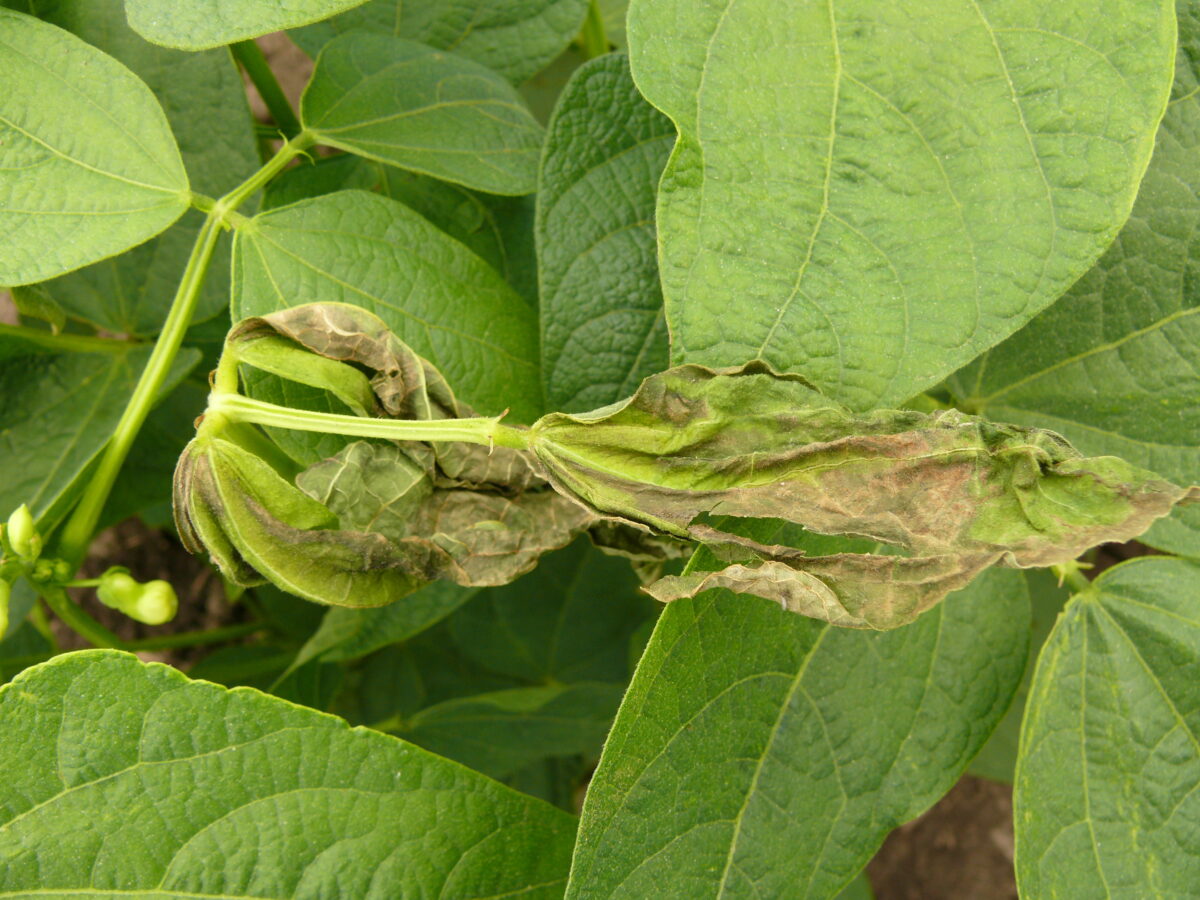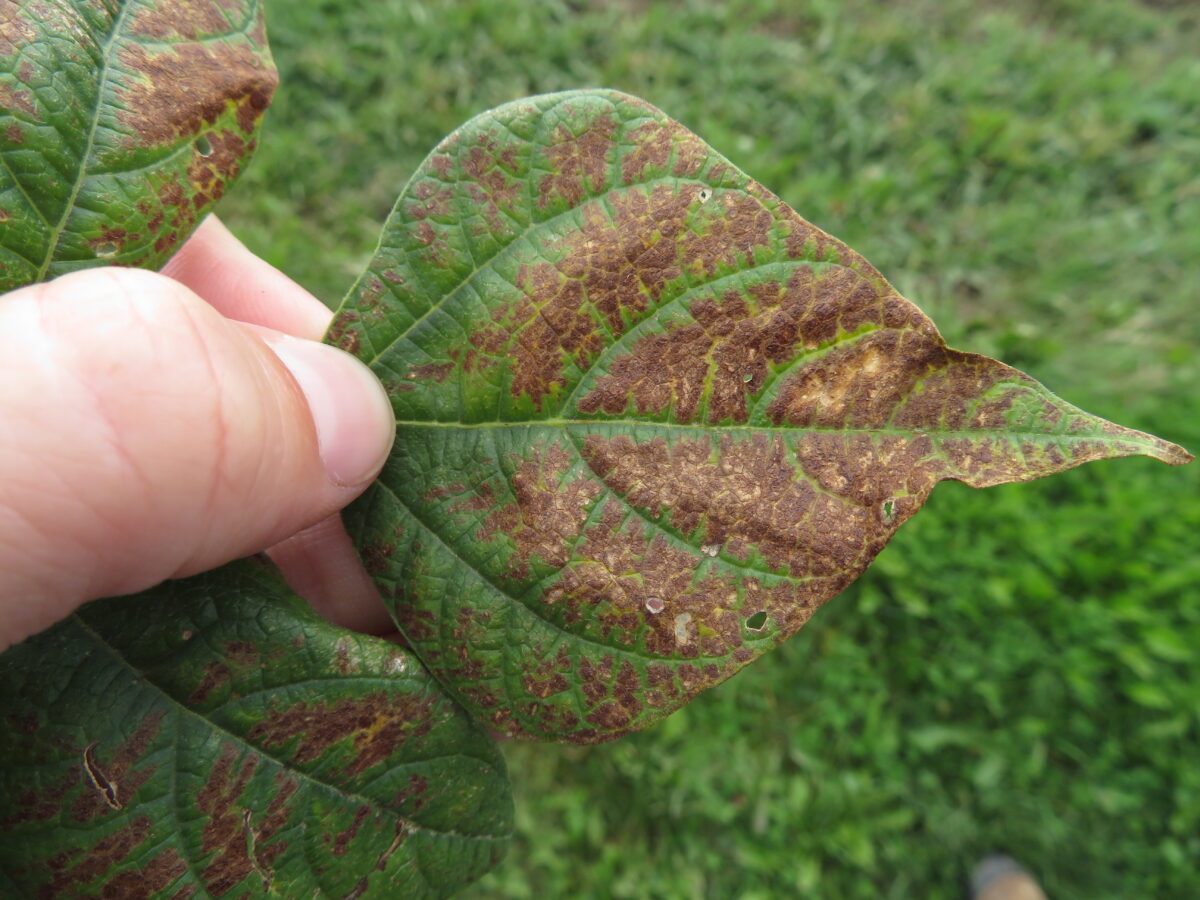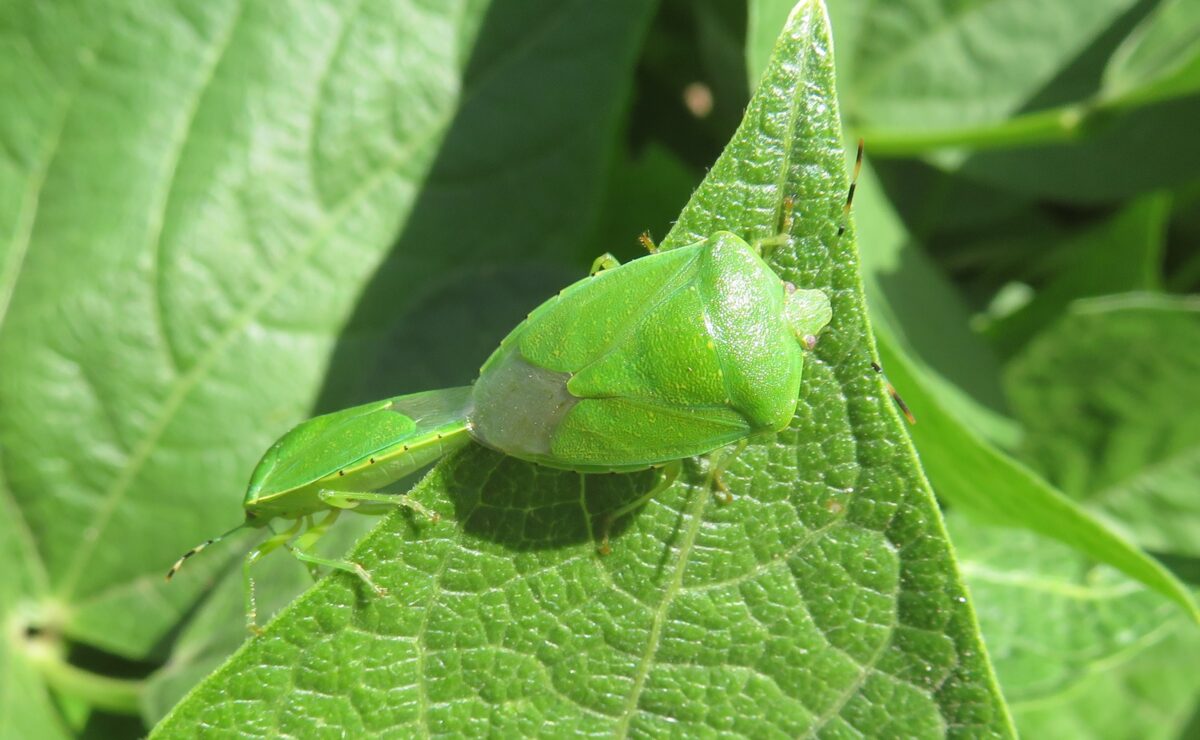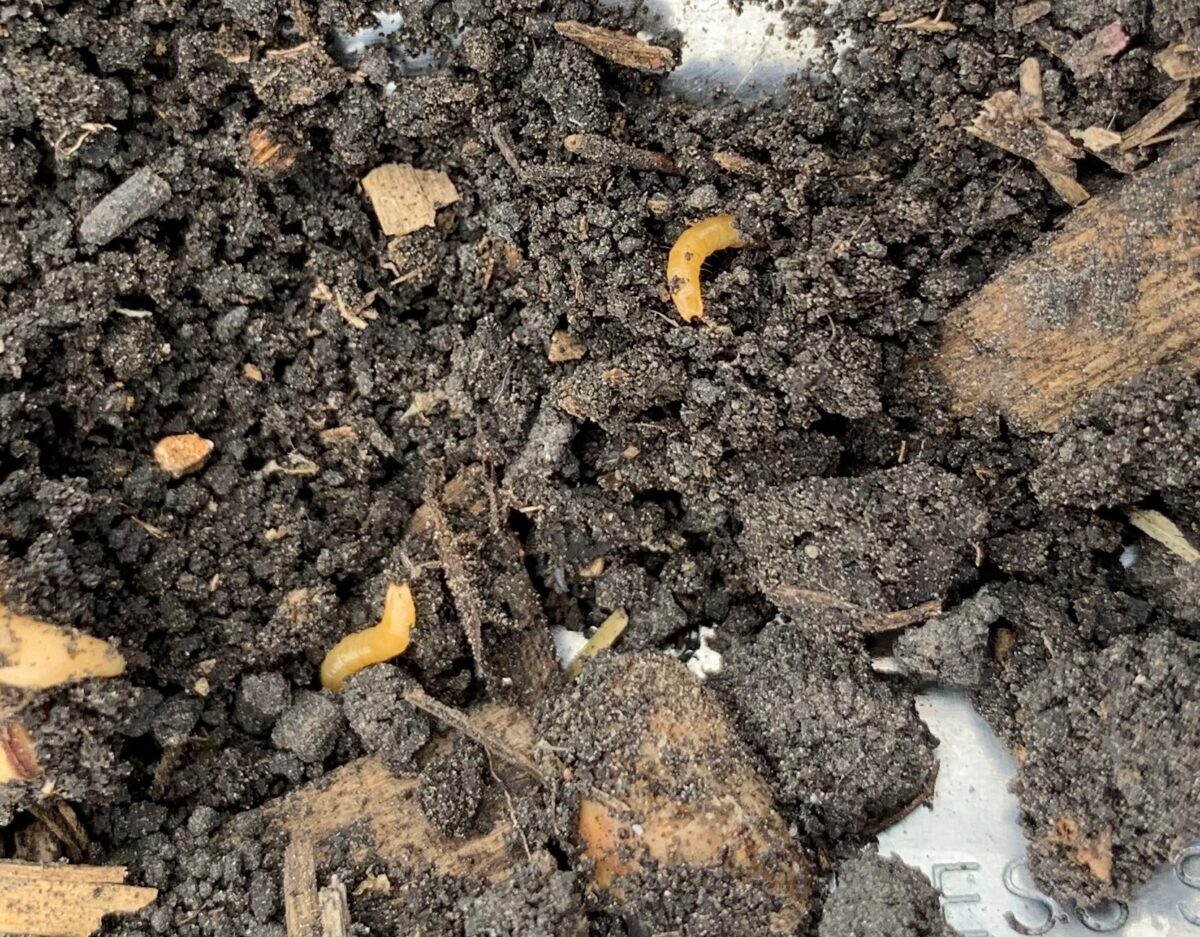Low zinc conditions may occur on low organic matter, compacted, sandy, very high pH and/or eroded soils. Deficiency symptoms may also appear when early growing season conditions are cool and wet. Zinc is not very mobile in plants so deficiency generally appears on new growth. Leaves will appear pale green between veins with yellowing of…Continue readingZinc
Manganese deficiency in dry edible beans has been diagnosed occasionally in Ontario. This problem is more likely to occur on muck soils or very sandy soils. Plants with manganese deficiency have pale green-to-white upper leaves. The veins of affected leaves will remain green. The pattern can appear similar to iron deficiency, but manganese deficiency occurs…Continue readingManganese
Yield losses typically reach around 55% when weeds are not properly managed in edible beans. To minimize any yield losses from weed competition in edible beans they should be kept weed free from emergence to first flower. Research by the University of Guelph (Ridgetown campus) has demonstrated that weed control is maximized in edible beans when a…Continue readingBasic Principles of Weed Control for Dry Beans
Group 15 (Dual, Frontier) Injury
Group 15 active ingredients commonly used for weed control in Ontario dry beans include S-metolachlor (Dual II Magnum) and dimethenamid-P (Frontier Max). Occasionally these products cause injury; injury is influenced by herbicide application rate and timing, soil crusting, seeding depth, weather conditions, and market class. Symptoms Herbicide is primarily absorbed through the elongating epicotyl/hypocotyl. Plants…Continue readingGroup 15 (Dual, Frontier) Injury
Root Rot Complex
Root rot complex (Fusarium solani, Rhizoctonia solani, Pythium spp. , Chalara basicola) Incidence Numerous organisms cause root rot symptoms on dry edible beans. In Ontario, the four main fungal pathogens are Fusarium, Pythium, Rhizoctonia and Chalara (formerly Tielaviopsis). These organisms can occur individually or in combination, as is often the case. This is referred to…Continue readingRoot Rot Complex
Common bacterial blight (Xanthomonas campestris pv. phaseoli) Halo blight (Pseudomonas syringae pv. phaseolicola) Bacterial brown spot (Pseudomonas syringae pv. syringae) Incidence Several different bacteria cause significant damage in dry edible beans. In Ontario, common bacterial blight (CBB) and halo blight have been the primary bacterial diseases but surveys in 2018 – 2019 have shown that…Continue readingBacterial Blights: Common Bacterial Blight (CBB), Halo Blight, and Bacterial Brown Spot (BBS)
Sunscald
Sunscald is caused by intense concentration of the sun’s heat on plant tissue. Sunscald is not considered to affect yields. Injury often occurs when bright sunny days follow cloudy, warm and humid conditions. Sunscald can occur on leaves, stems or pods and most often affects new, tender leaf tissue at the top of the plant.…Continue readingSunscald
Bronzing
Symptoms Bronzing is a type of foliar crop injury that starts off as brown or bronze flecks on the upper leaf surface but spreads as plant cells die, leaving necrotic and chlorotic spots. Severe symptoms also include early senescence, leaf yellowing and loss, and rapid aging of the plant. (Campbell Fraser, 2009). Cause of Bronzing…Continue readingBronzing
Stink Bugs
Brown Stink Bug (Euschistus servus) Green Stink Bug (Chinavia hilaris) Brown Marmorated Stink Bug(Halyomorpha halys) Description Three types of stink bugs can injure beans: green stink bugs, brown stink bugs and brown marmorated stink bugs. Green stink bug adults are large — about 2 cm (0.75 in.) long — light-green, shield shaped bugs. Brown stink…Continue readingStink Bugs
Photo credit: Megan Bourns Wireworm (Limonius spp., Agriotes spp., Hemicrepidius spp., and others) Crops at risk of wireworm damage are primarily corn and cereals, and occasionally/rarely soybeans, forages, dry edible beans and canola. Description Wireworms are larvae that are 2–40 mm (0.1–1.6 in) long, cylindrical, copper-brown-coloured and hardened with a distinct fat head. Adult wireworms are…Continue readingWireworm
